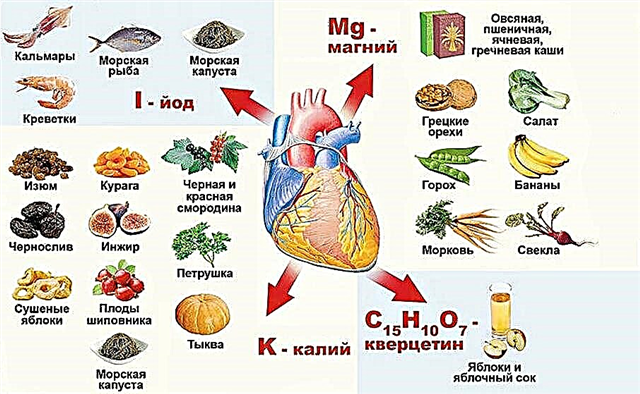There are people who suffer from the constant appearance of crusts with blood in the nose. They are already so used to it that they do not care why there are bloody bugs in their nose. However, it should be alerted if, despite the daily careful toilet, they still continue to form. If such a nuisance repeats several times in a row, you need to seek the advice of a doctor. After all, blood in the nose can signal the presence of a serious problem in the body.
Ignoring this problem and the lack of proper treatment will sooner or later lead to the fact that the nasal mucosa will completely atrophy. And then there will be more discharge with pus, pain in the bridge of the nose and other unpleasant symptoms. To understand why both blood crusts and the preceding discharge with fresh blood form in the nose, you need to know the reasons for this phenomenon.
Symptoms
The main symptom is excessive dryness of the mucous membrane. And the appearance of pieces of caked blood is accompanied by an unpleasant (sometimes even fetid) odor and a significant amount of crusts with inadequate nasal hygiene. The most common symptom is complication of breathing through the nose. It is supplemented by a complete loss of smell or its sudden decrease.
At the very beginning, when crusts of clotted blood in the nose are just about to form, the inferior turbinate atrophies. Then this destructive process also affects the walls of the nasal passages. At the same time, their cavities expand significantly.
During the rhinoscopy procedure, the doctor clearly sees a dried cover in both nasal passages, consisting of dark brown or yellow-greenish crusts. It even covers the nasopharynx (more precisely, its back wall). Often, when these crusts begin to dry out, they cover the entire mucous membrane in the nose with a dense shell. Thus, the nasal passages are almost completely filled.
After removing the blood crusts, the clear cavities of the nasal passages become wider. But the mucous membrane in places is covered with a thick yellow-greenish exudate.
Where does clotted blood come from in the nose?
Considering the reasons for the drying up of blood in the nose, first of all, you need to understand why the capillaries are damaged. After all, it is from them that blood enters the nasal passages, turning over time into those very dried crusts.
- Living conditions. Dry air is considered to be the main factor for blood entering the nose. If the room has an extremely low humidity level, you can assume that you have established where the blood comes from when you blow your nose. The effects of excessively dry air can most often be felt in winter - when the heating season is in full swing, at work, as well as in some climatic zones. Especially if a person's stay in this zone is short-lived - the body simply does not have time to go through adaptation. The mucous membrane of the nose begins to dry out rapidly, as a result of which the capillaries can be damaged.
- Taking medications. Frequent use of local medications for the common cold can also cause dried blood crusts in the nose. Many nasal sprays and drops, which are used to relieve nasal congestion, dry out the nasal mucosa. And this adversely affects the condition of the capillaries. To avoid the appearance of such an unpleasant side effect, special agents should be used to combat the common cold strictly for medical reasons. It is also recommended to alternate the use of these products with moisturizing the mucous membrane with any of the vegetable oils of your choice.
Diseases of the nasopharynx. Most often we are talking about sinusitis. When the mucous membrane becomes inflamed, minor bleeding occurs, the cause of which is damage to the capillaries. Visually, this is expressed in crusts of clotted blood in the nasal passages.
- Diseases of the cardiovascular system. High blood pressure often provokes profuse nosebleeds. However, sometimes very little blood is released. And it is found only in the form of caked pieces during blowing your nose or hygienic cleaning of the nose. An indication that the cause of blood clots lies precisely in hypertension is the fact of a pressure jump, after which these clots are observed. It is also advisable to check the condition of the vessels if signs of bleeding from the capillaries are visible in the morning, after waking up. Take into account the humidity level in the bedroom - it should be normal.
- Connective tissue problems. They can be caused by autoimmune diseases (pathological conditions that occur when the body's immune system produces antibodies to its connective tissue). As you know, capillaries and other vessels are composed of connective tissue. That is why one of the symptoms of vasculitis, systemic lupus erythematosus, Sjogren's syndrome and a number of other autoimmune diseases is damage to the walls of the capillaries in the nose. Therefore, traces of dried blood are observed in the nasal secretions.
Diagnostics and methods of treatment
The first step towards eliminating such a nuisance as clots of clotted blood in the nasal passages is accurate diagnosis. If you expect a quick and successful treatment, it must be timely. The doctor makes a diagnosis, guided by the following symptoms: the presence of a stench from the nose, many blood crusts, as well as severe atrophy of the inner wall of the nasal cavity and the mucous membrane lining the nasal passages. Most often, clots of clotted blood in the nose are accompanied by acute laryngitis and pharyngitis. In rare cases, they are accompanied by tracheitis.
If, when cleansing your nose, you regularly remove clotted blood from there, this should prompt you to visit a specialist. The doctor will conduct a rhinoscopy - an examination with the help of which it will be possible to find out the specific cause of the appearance of dried crusts. When some congenital or acquired pathology is found during the examination, it is possible to decide on its correction.
So, as already mentioned, it is possible to successfully get rid of blood crusts only when the diagnosis was made in a timely manner. If the causes of the identified ailment are not related to tissue atrophy, then the patient is treated with conservative methods. The following procedures are often prescribed:
- organotherapy - to restore the normal functioning of the nasal mucosa;
- phytodynamic therapy - after the mucous membrane is restored, it is necessary to maintain and consolidate its performance;
- irrigation (necessarily finely dispersed) by means of mineral solutions;
- acceleration of lymph flow - to resume excretory function;
- inophoresis - to restore normal tissue activity;
- nasal lavage and irrigation (prescribed if the cause of the formation of blood crusts is simply dry mucosa).
The question arises: is it possible to somehow solve this problem on our own, without resorting to the help of doctors? Sure. First of all, you need to constantly monitor the level of humidity in the room where you spend most of your time.
To moisturize the nasal mucosa and heal it, it is allowed to use a variety of ointments (it is best to choose those that also have a disinfecting effect). However, if you have already tried everything you can, and crusts of clotted blood in the nose still appear, it is recommended that you visit an experienced otolaryngologist.
Let's summarize
If suddenly, when blowing your nose, a blood goat is found, you should not panic right away. Observe the nasal discharge for several days. If clotted blood appears in the nasal passages every day, you should consult with an otolaryngologist. He will conduct the necessary examinations to exclude (or confirm) pathological conditions.
In most cases, such a nuisance is easily eliminated. However, if you have any congenital pathology, or irreversible atrophic degenerations of the mucous membrane have begun, it is undesirable to delay a visit to the doctor. After all, the formation of blood crusts signals that atrophy of the mucous membrane is already developing.
Therefore, you will have to be treated under the guidance and supervision of a specialist. It is extremely important in this case to timely and correctly determine the causes of the problem. A correct diagnosis significantly increases the chances of recovery.



